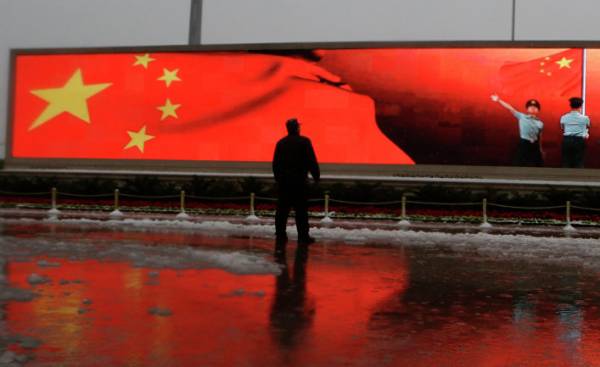
For the past seven years, I read at Yale University popular course called “the Future China”. From the outset, the emphasis in this course deleted transition issues in contemporary Chinese economy in its transition from manufacturer, which has long been successful, to a model that relies more on household consumption. The lecture also considers the threats and opportunities that arise in the course of this rebalancing, and its implications for stable economic development of China and the world in General.
Many important elements of the transition process in China stood at your place (especially rapid growth of the services sector and accelerate the process of urbanization), but there is clearly a new and very important turn. China seems to have become a user of globalisation in the engine. New China is doubling down on its relationship with the integrated world, whereby new risks and prospects.
Signs of turning appeared a few years ago. A strategic shift has largely been the result of personal initiative of the President of China XI Jinping, in particular, his attention to the idea of “Chinese dream”. Initially this dream was a kind of nationalist mantra: it was about recuperation, thanks to which China will regain its former role on the global stage, commensurate with the status of second largest economy in the world.
Now, however, the “Chinese dream” takes the form of a concrete plan of action centered on the program “One belt, one road” (OBOR). This is an ambitious, panregional initiative in the field of infrastructure, which combines economic assistance with a demonstration of geostrategic forces and relies on a new set of “citizenlink” financial institutions — the Asian infrastructure investment Bank, New development Bank of BRICS countries, the “silk road”.
For those of us who study economic transformation of China, such a development is difficult to call an ordinary one. And while the transition is still ongoing, I would have focused on three preliminary conclusions.
First, China has not made a complete reversal. I am an economist, and I tend to make too much emphasis on economic models and on the idea that governments can switch from one model to another. However, the reality is not as black and white — neither in China nor in any other country.
The Chinese leadership, in fact, admits that the strategy of growth based on consumption proved more difficult to implement than originally anticipated. In 2010, the share of consumption in GDP rose by only 2.5 percentage points. This is much less growth in personal income, which would be expected after the increase in the share of services sector in GDP by 7.5 percentage points and the share of the urban population with higher wages in the population — 7.3 percentage points over the same period.
This discrepancy is mainly due to “leaky” system of social protection which encourages a high level of savings for a rainy day because of fears for the future. Thus inhibited the growth of discretionary consumption. Although China remains true to the strategy of further urbanization and development of the services sector, he decided to go to a new external source of growth to compensate for the lack of domestic demand.
Second, a global “charge” China has many features of the older models of the manufacturer. It allows you to redirect excess domestic capacity, causing a growing concern on the infrastructure needs of the project at OBOR. However, he relies on state-owned enterprises as the engine for these investments, which hampers long-overdue reform in this bloated segment of the Chinese industry.
The flip side of newfound support production growth model was the reduction of the priority of the strategy of growth based on consumption. In the annual “Work report” Prime Minister Li Keqiang (this is a policy document on economic policy) the emphasis on structural transformation, driven by consumption, reduced for the past two years (in 2016 and 2017, this task was put on the third place, the so-called measures on the side of the market offers got a higher priority).
Thirdly, a new global approach to China reflects changes in the governance of the country. And consolidation of power by XI Jinping, is only part of the bigger picture. The transfer of the center of economic decision-making from the Commission on the national development and reform Commission under the state Council in the so-called small leadership group of the CCP is particularly important, as well as launched the anti-corruption campaign, strengthening Internet censorship and the introduction of new regulations for non-governmental organizations.
The centralization of power is difficult not to see irony. The fact that earlier, XI Jinping, promised to break with the deeply entrenched power blocs, and announced in November 2013 at the Third Plenum of the CPC Central Committee, the reform emphasis was on providing a more prominent role for markets.
However, in the new force of China there is a deeper irony. It is developed on the background of the populist reactions of the anti-globalization movement that swept many developed countries. With the economy producer, China has long received the biggest gains from globalization from the point of view of economic growth, export-oriented, and from the point of view of poverty reduction, through the application of surplus labour. This approach is now stalled because of growing domestic imbalances in China, post-crisis deceleration in global trade and rising protectionist sentiment, the target of which is China. As a result of new China’s attempts to receive an additional boost with the help of globalization have encountered serious problems.
The emergence of a global China has important implications for Chinese foreign policy. Territorial disputes in the South China sea is particularly noticeable, however, the increasing presence of China in Africa and Latin America is also beginning to attract increased attention. The new strategy of the country raises perhaps the most important question of all: will China take the place of the hegemon, the vacant after the President of the United States Donald trump proclaimed isolationist approach under the slogan “America first”?
The future China has features of the country with greater orientation towards the external world with greater vigor and with greater concentration of power than I had anticipated when I started to read this course in 2010. At the same time the impression that China has become less committed to the program of market reforms to stimulate private consumption and restructuring of SOEs. It is difficult to judge whether this was the result of “rebalancing” of China. I hope it is not. However, it is through such stories and interesting way to teach an applied course in which you have to follow the constantly changing object of study.
Stephen roach — former Chairman and chief economist of Morgan Stanley Asia. He is a senior Advisor at the Institute of international relations name of Jackson and a senior lecturer in the School of management at Yale University and the author of “Unbalanced: the interdependence of America and China.”







